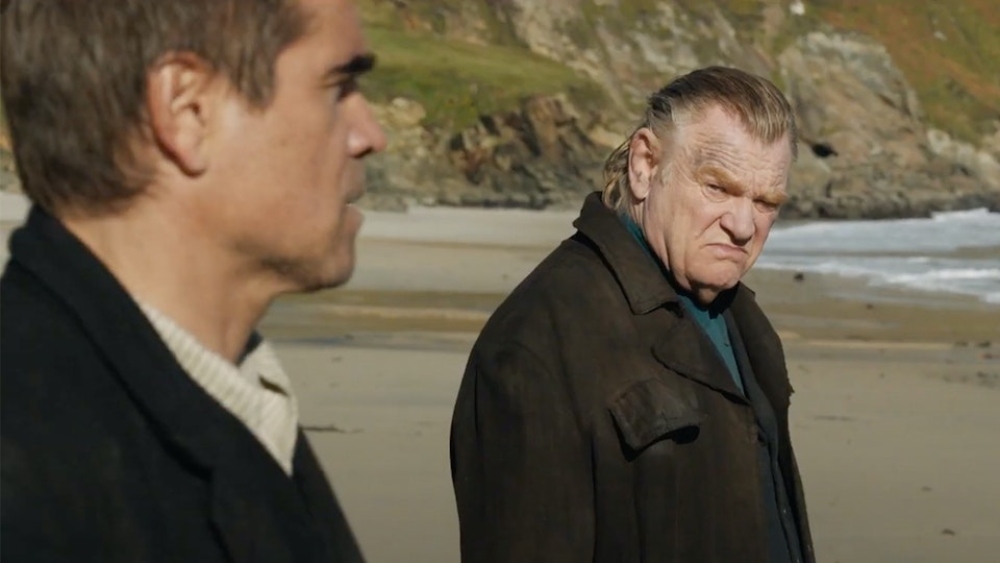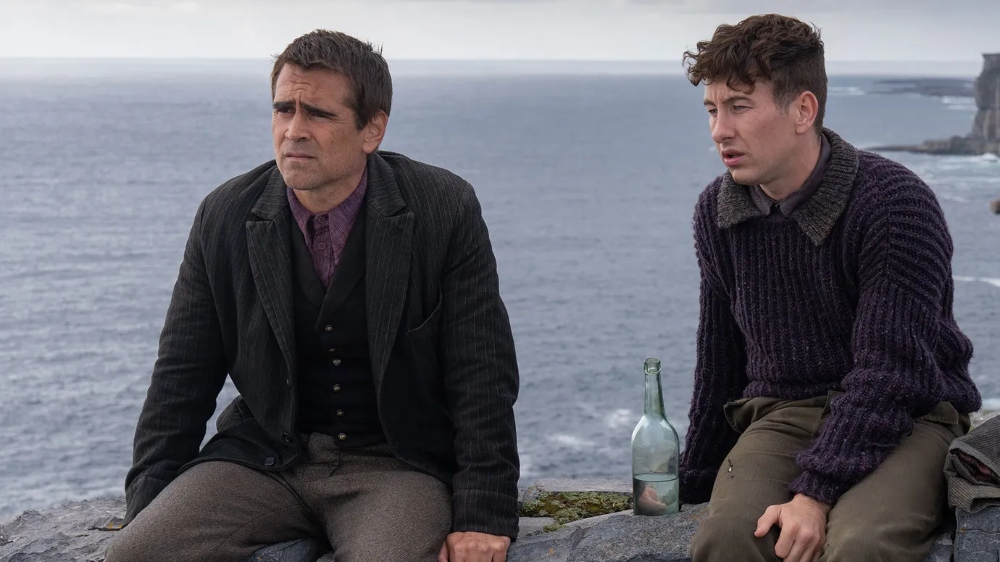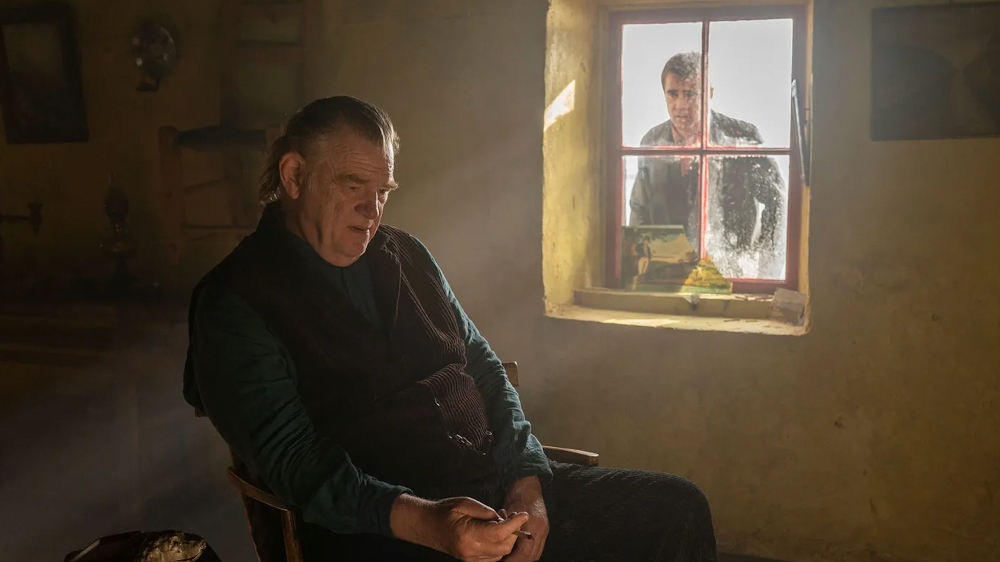
Do you ever feel like you just want to be left the eff alone for no discernible reason other than you have simply had enough? Would you be willing to cut off your proverbial nose to spite your face in order to achieve that level of hermitage? These are the questions posed by director Martin McDonagh’s latest film The Banshees of Inisherin, which answers them with amusing and at times appalling alacrity.
McDonagh’s unique blend of dark comedy and sarcastic humor can be eclectic, but it appeals to a niche audience, as exemplified by his 2008 breakout In Bruges and his divisive Oscar winner Three Billboards Outside Ebbing, Missouri, which came out nearly a decade later. But the writer-director’s latest effort, the festival darling Banshees, leaves no doubt that he is, at a minimum, one of the most singular creative voices working in cinema today.
The Banshees of Inisherin reunites McDonagh with his In Bruges stars Colin Farrell and Brendan Gleeson, and the film is set in the 1920s on a remote Irish island (the titular Inisherin) that is far away enough from the tumult of the metropolis, the density of city living and the physical threat of war, that denizens can live content in their mundane existences, but not so removed that the ennui of strife and the gloominess of the weather do not make themselves felt on a daily basis.
Farrell plays Pádraic Súilleabháin and Gleeson plays his longtime buddy Colm Doherty (Gleeson), while Kerry Condon co-stars as Pádraic’s loving sister, Siobhán, and an excellent Barry Keoghan offers support as their quirky neighbor, Dominic. Pádraic and Colm are lifelong best friends, at least until the latter decides that the friendship is not working for him anymore, and abruptly decides to terminate it with little explanation. To give you a sense of the sort of gloomy, down-on-your-luck tenor of this script, let’s just say that when Colm finally does offer a reason for his abrupt about-face, it is simply to point out that Pádraic is a bit dull and boring (which he is) and Colm would rather spend his days creating something he can leave behind and make his mark on the world with, rather than simply yammer about with Pádraic.

Pádraic does not take the cold shoulder well, at first convinced that it Colm is playing a cruel April Fool’s joke on him, and later believing that he can persuade Colm to see the error of his ways. But Colm is resolute as a drunken reveler on St. Patrick’s Day — and there’s nothing anyone can do to dissuade him in his stance. In fact, he’s willing to do severe harm to himself should Pádraic himself even try, which raises the stakes of their feud and results in a series of increasingly catastrophic events for all involved.
Farrell is tremendous as the sullen, crestfallen, and pathetic Pádraic, who feels rejected and humiliated but cares only that he be paid attention to again. He mopes around, maladroit, dragging his feet and stalking Colm around the three or four houses that comprise the landscape of where they live. Farrell steals the show with his performance, permitting himself to age gracefully into the role of a sad, dumpy, middle-aged man who just yearns to be loved. It’s rather heartbreaking when you think about it.
Tech-wise, accolades belong first and foremost to Cinematographer Ben Davis, who also lit Three Billboards as well as a number of recent Marvel movies, including Eternals and Captain Marvel. This film, however, is his best work to date, as the island where Banshees takes place offers stunning cliffsides, vast green pastures, and open blue skies that are unquestionably beautiful, even when they’ve turned sullen and grey. He uses wide lenses and panoramic shots frequently to show the smallness of the characters and the vast emptiness of their surroundings, and there is an eerie beauty to his photography. As the sea crashes along the coast, as the animals roam about the pasture, it is the color palette that reminds you of the very nature of existence — what it means to be alive, and how death awaits us all. A shot of a burning house towards the end of the film is Davis’ crowning achievement, showcasing real, violent color for the first time against a backdrop that has been simultaneously lively and morose for its entire two-hour running time.
Editor Mikkel E. G. Nielsen is asked to work with a very meticulous and deliberate script that leaves him little room for editing error, while Production Designer Mark Tildesley equals that impressive feat with the beautiful simplicity of his drab interiors, and Costume Designer Eimer Ní Mhaoldomhnaigh conjures some appropriately morose garbs for the time period. Finally, Composer Carter Burwell puts the icing on top with a darkly playful score. But from a below-the-line perspective, it is entirely Davis’ show and he is in full command of the camera and the film’s color palette.

Still, it would rob McDonagh of the credit he deserves to say much more about all of the other excellent elements of his film, be it Farrell’s impressive comic timing or Keoghan’s supporting turn. At the end of the day, this is a dialogue-driven movie about people talking, and it’s the clever script that makes you want to lean in and listen to the characters, laugh at their often preposterous behavior, and shock you with McDonagh’s own unapologetically cynical view of life. To list but one example, each time Colm enters the confession booth at his church, he finds himself verbally sparring with the priest, which is a comedic delight.
More impressive still, however, are McDonagh’s various messages about the human condition. People just want to be loved and to be heard. Others just want to be left alone, and midlife crises based upon the realization of the banality of our existence are painfully real. Humans are, indeed, each other’s worst enemies. If those ideas sound both too cliched and too grandiose, geopolitics also factors into the mix, with McDonagh conveying that the foibles of war — particularly war amongst kin (ahem, hello to the USA in 2022!) — are particularly painful, destructive, and all-encompassing. Sure, these concepts may sound familiar here, but none of them are even uttered in The Banshees of Inisherin, they’re simply textured into a narrative that is mostly amusing until it becomes both alarming and astonishing.
The Banshees of Inisherin won’t cure you of antisocial anxieties or a desire to escape humanity to a secluded space. It will not change your mind if you’re feeling particularly isolationist or disillusioned. On the contrary, it is likely to cement these convictions and make you feel even more existential dread. Cinematically, though, it is refreshing to see truly creative stories and original ideas executed so well on the big screen. McDonagh’s pitch-black humor may not be for everyone, but his creative vision is, by now, wholly undeniable.
Grade: A
The Banshees of Inisherin premiered at the Venice Film Festival and will be released in U.S. theaters on Oct. 21 by Searchlight Pictures.





